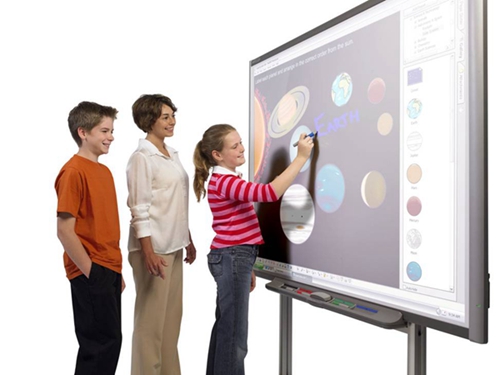Wherever you place the screen, it should be at least 4 feet above the floor so
that all the students can see it.
Size
There is a school of thought that bigger is always better. Fortunately,
that's not true when it comes to interactive devices. Larger screens can
actually stretch images and cause visible pixelation, which spoils the clarity
of the images.
The optimum screen size is actually related to the viewing distances of the
students. The students who are sitting closest should be no closer than twice
the height of the screen. The furthest students should be no further than 6
times the height of the screen. In order to hit the ideal proportions, you may
need to rearrange the seating in the room.
Choosing The Technology
The high image quality and lifespan of the interactive flat panel makes it
an attractive option for schools, but these qualities come at a price. For
schools with a tighter budget, an interactive board may be a better choice. It
depends on how often it will be used.
While the up-front costs are lower, and interactive board relies on a
projector, and they have lamps which must be replaced from time to time. The
lifespan of the lamp depends on how heavily it is used. In addition, some
projectors have filters that must be maintained, too.
Consider the long term expenses as well as the short term ones.
